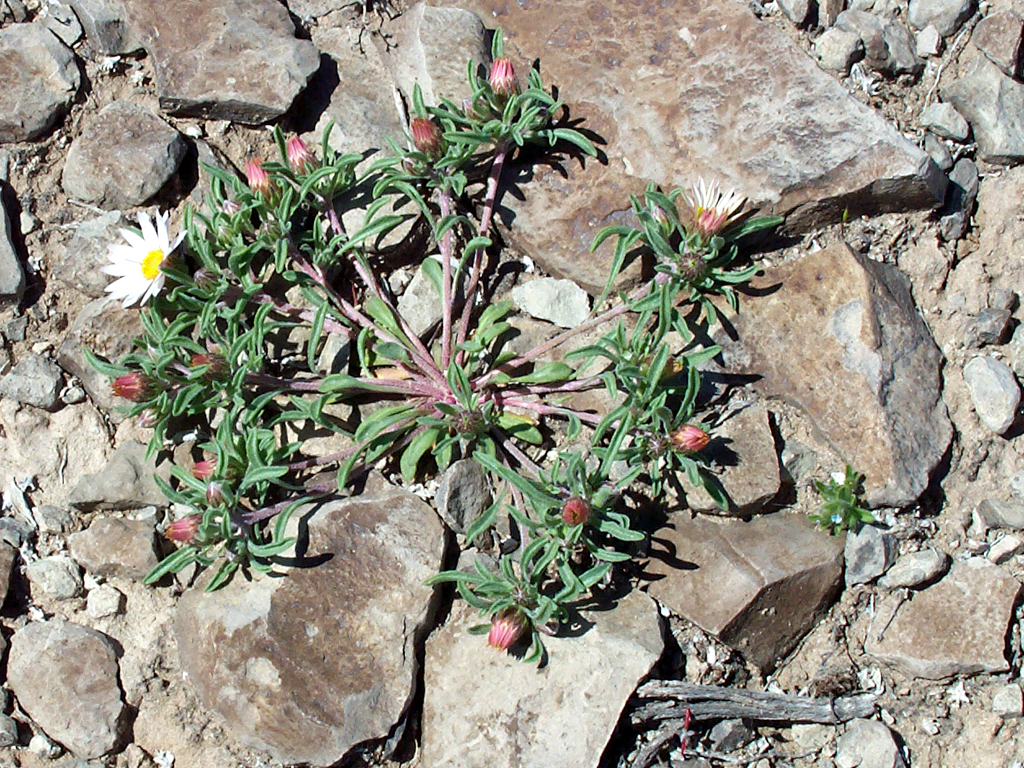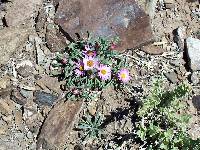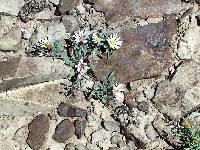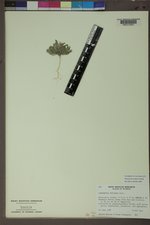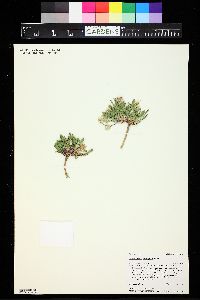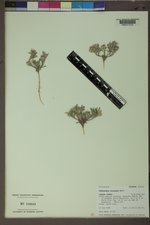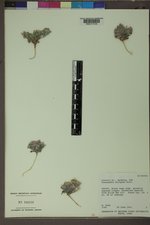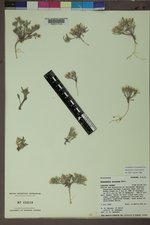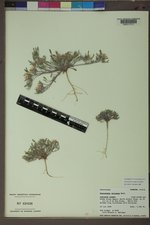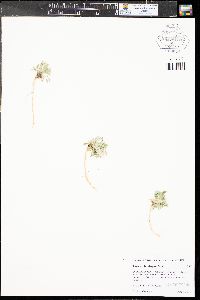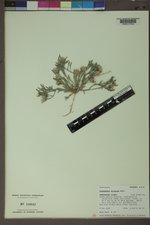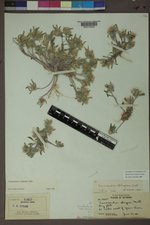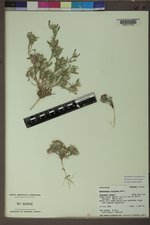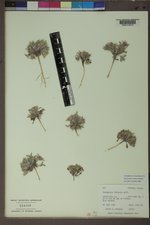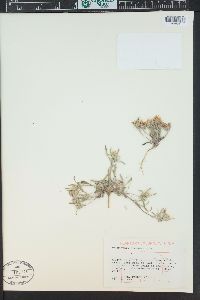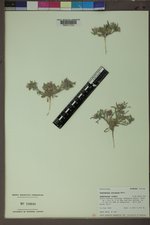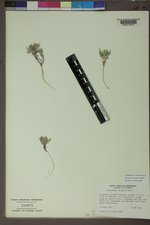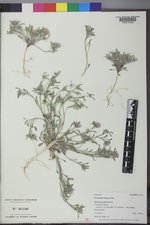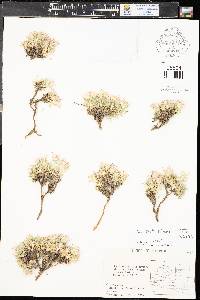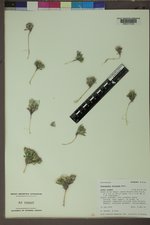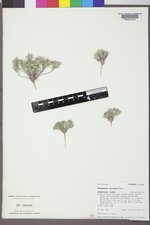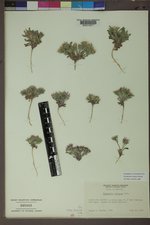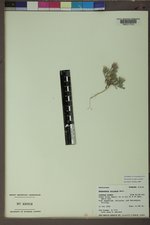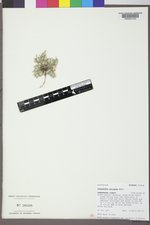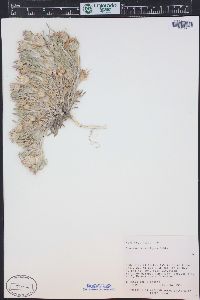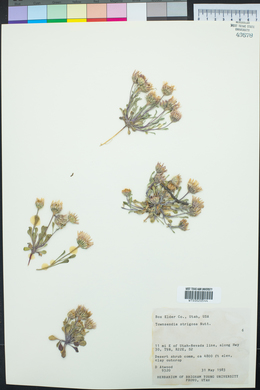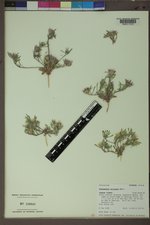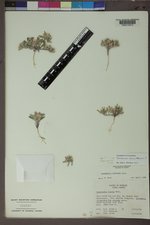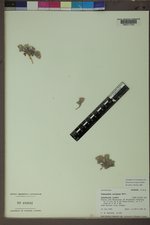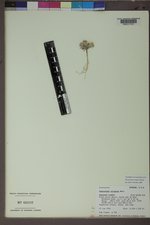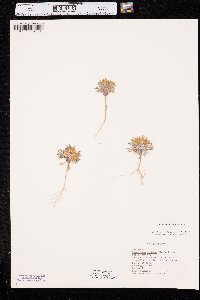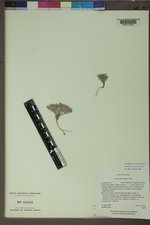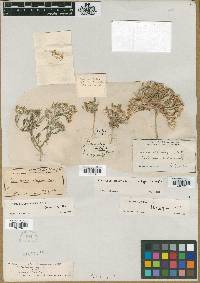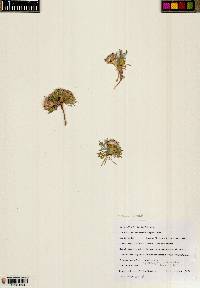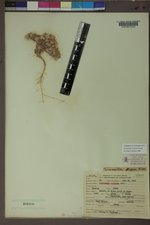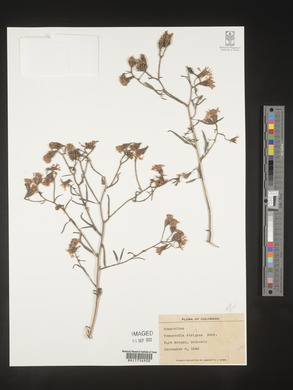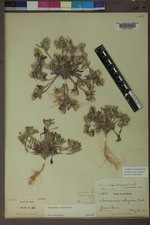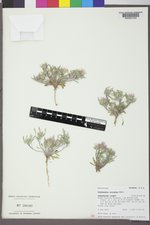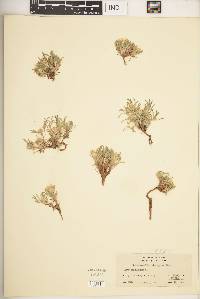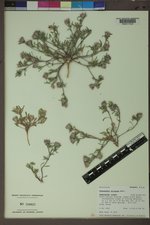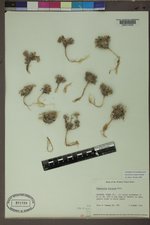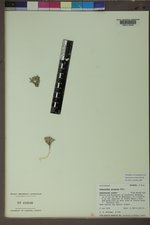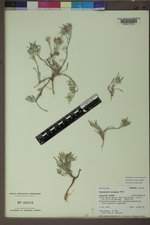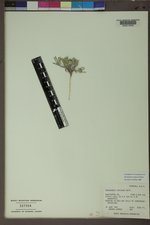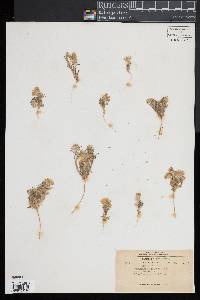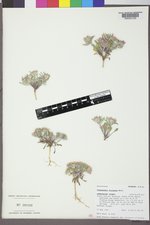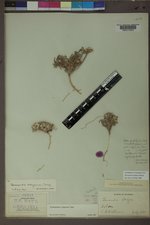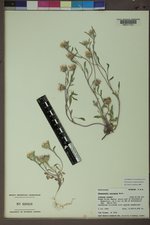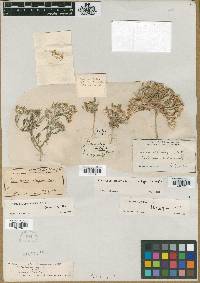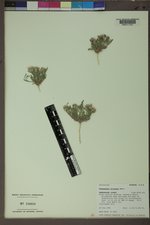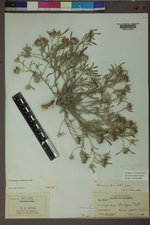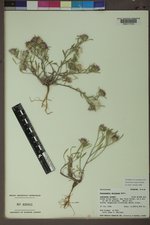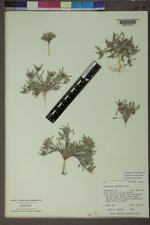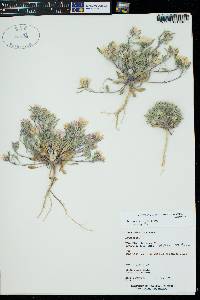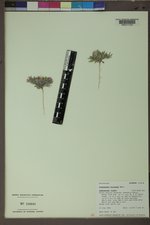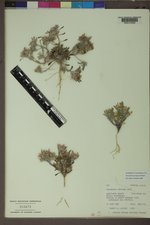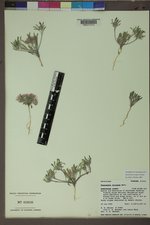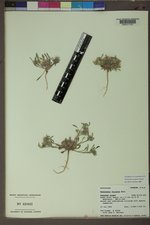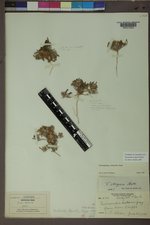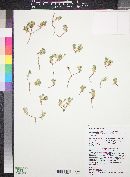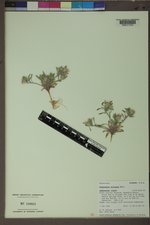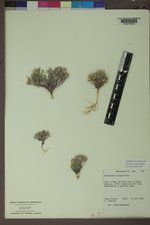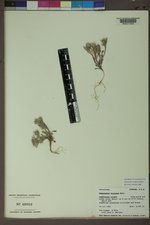
|
|
|
|
Family: Asteraceae
Hairy Townsend Daisy, more...hairy Townsend-daisy, hairy townsendia
|
Biennials, (1-)3-10(-20) cm. Stems decumbent to erect; internodes 5-25 mm, piloso-strigose to strigillose (surfaces seldom hidden by hairs). Leaves basal and cauline, blades spatulate to oblanceolate or linear, 12-30(-50) × 2-7(-9) mm, not fleshy, faces ± strigose to strigillose. Heads at tips of stems (usually surpassed by leaves). Involucres ± campanulate, 5-20 mm diam. Phyllaries 20-24 in 3-4+ series, the longer ± lance-ovate to lanceolate, 5-9 mm (l/w = 2.5-5), apices acute to acuminate, abaxial faces strigose. Ray florets 8-30+; corollas white or pinkish adaxially, laminae 5-14 mm, abaxially usually glabrous, sometimes glandular-puberulent. Disc florets (8-)20-80(-100+); corollas 3.5-5 mm. Cypselae 3-4 mm, faces hairy, hair tips glochidiform; pappi persistent; on ray cypselae 12-20+ lanceolate to subulate scales 0.5-1.5+ mm; on disc cypselae 20-35 subulate to setiform scales 3.5-5.5 mm. 2n = 18. Flowering May-Jun. Open sites, sands, shales, clays with desert scrub, junipers, pinyons; 1500-2000 m; Ariz., Colo., N.Mex., Utah, Wyo. FNA 2006, Kearney and Peebles 1969, McDougall 1973 Duration: Annual Nativity: Native Lifeform: Forb/Herb General: Herbaceous annuals or rarely biennials, diffusely branched, to 10 cm tall or more, stems decumbent to erect with crowded leaves, herbage loosely strigose, plants with a somewhat woody, branched caudex. Leaves: Basal or alternate, spatulate or linear to narrowly oblanceolate, to 5 cm long, margins involute to flat, strigose to sparsely appressed-pubescent. Flowers: Heads radiate, rays white to purple, 8-30 or more, laminae 5-14 mm long, numerous, pistillate, disk flowers yellow, perfect, 20-80 or more, involucres campanulate, 1-2 cm high and 5-20 mm diameter, phyllaries 20-24 or more, overlapping in 4-6 series, lance-ovate to lanceolate, with obtuse to long-acute tips, thin, dry, and membranaceous, irregularly ciliate, heads borne at stem tips, usually surpassed by the leaves. Fruits: Achenes 3-4 mm long with glochidate hairs. Disk pappus of short scales to 1 mm high, ray pappus of short scales 3.5-5.5 mm high. Ecology: Found on sands, shales, and clays, in open sites, dry mesas and slopes, and desert scrub, juniper, and pi-on communities, from 3,000-7,000 ft (914-2134 m); flowering March-September. Distribution: Wyoming to New Mexico and Arizona. Notes: This genus is very close to Aster, but the pappus is not composed of capillary bristles, but rather several to many long bristles or short scales. Good identifiers for this species are the diffusely branched annual or biennial plants, with a ray pappus of short scales. Ethnobotany: An infusion of the plant was used as a wash or douche, to clear the throat, and a decoction of the crushed, dried leaves was taken for stomach troubles, to accelerate deliverance, and as a snuff for nose troubles, and the plant was chewed by Night Chant chanters and spit upon prayersticks to facilitate the disentanglement of string, or spat upon the wands used in the Night Chant. Etymology: Townsendia is named for David Townsend (1787-1858) an American botanist, while strigosa means covered in straight, flat lying hairs. Synonyms: Townsendia strigosa var. prolixa Editor: LCrumbacher 2011 |
This project was made possible in part by the Institute of Museum and Library Services [MG-70-19-0057-19].
Powered by Symbiota

